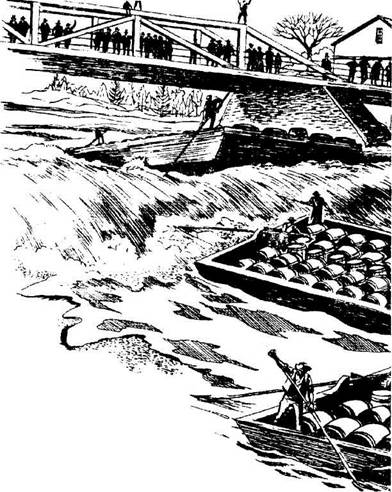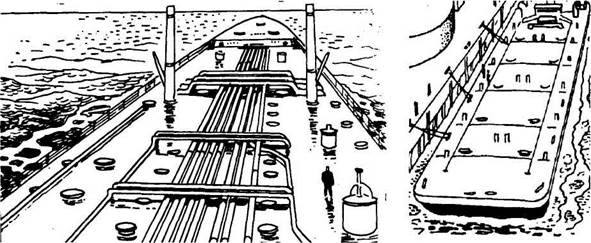Back to History
Before Colonel Drake's well went into production, oil was sold for forty dollars a barrel. After his success thousands of men went into the oil business. So many wells were sunk that production rose from 2,000 barrels in the year 1859 to 3,057,000 in 1862. Of course, prices dropped, because there was no reliable and cheap way of getting it from the wells in Pennsylvania to the far away cities and towns where it was needed. Oil men had surmounted two of three big problems. They now had a product which could be obtained cheaply and in great quantities. They had a wide market for that product. But they had to solve the third problem - distribution. Tranportation and Storage Railroads were still few and generally ran only between the big cities. Roads were so poor that to haul oil barrels any great distance by horse-drawn trucks would have been difficult. This left water transportation as the best means of distribution. Oil Creek, a stream which flowed past Titusville to the Ohio River, offered a chance to float barges down to Pittsburgh and Cincinnati and other large cities. But Oil Creek was not much of a stream; often the water was so slow that it wouldn't float the barges. Then the bargeman built a succession of dams across the creek and, when they were full of water, blew each one up behind a string of loaded barges. The barges shot ahead on the crest of the flood from the broken dam - a sort of giant shoot-the-chutes. Too often barges overturned
Chapter Five
or rammed other barges, and crew and oil barrels were tossed into the flood. The oil was barreled at the wells and hauled to the barges in great wagons dragged by teams of from six to twenty horses. The drivers, called skinners, were superb teamsters. Because there was no other way of transporting the oil, the teamsters got very high prices for hauling it from well to flatboat. Then some owners began to lay pipelines from their wells to Oil Creek to save the cost of haulage. «The idea of a pipeline was not new; water had been transported through pipes for hundreds of years. When the first pipeline was begun, the teamsters, a hard-drinking, hard-fighting lot, were not the kind of men to lose their high-paying monopoly without a fight. They began, dynamiting the Tranportation and Storage
Looking forward toward the bow of a modern supertaker. An oil barge used for transporting petroleum products on inland waterways.
CARGO TANK COMPARTMENTS
|






 QUARTERS AND.ENGINE AREA
QUARTERS AND.ENGINE AREA


